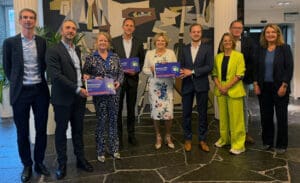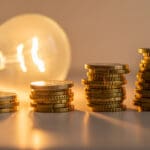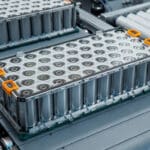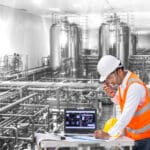On October 1st, TNO presented the Carbon Capture & Utilization (CCU) Quick Scan to ChemistryNL and the Ministry of Climate and Green Growth. Commissioned by ChemistryNL, the quick scan maps the Dutch CCU playing field and selects the most promising routes for further development. The analysis was conducted based on technical criteria (such as the TRL), feasibility in the Dutch context, and the contribution to sustainability and circular chains.
Promising CCU routes for the Netherlands
The quick scan results in a shortlist of routes that are technically feasible and align with Dutch industry:
- CO2 to methanol TRL: 9. Methanol is a versatile building block for plastics, solvents, and fuels for the aviation and shipping industries, sectors that are difficult to electrify. Furthermore, EU blending requirements apply to aviation and shipping. Pilot and demonstration projects for this technology are already underway in Europe and could potentially be scaled up in the Netherlands, particularly in Rotterdam and Delfzijl.
- CO2 to syngas, a building block for synthetic aviation fuels TRL: 6-7. This route is of strategic importance for aviation. Scaling up requires a strong link with large-scale production of green hydrogen.
- CO2 to DME, a sustainable diesel alternative. TRL: 7-8.
- CO2 to oxalic acid and formic acid. TRL: 4-6. These chemicals are important building blocks for plastics, food production, and fuels, for example.
- Mineralization of CO2, TRL: 6-9. Technically relatively mature and applicable in the construction sector via carbonates or fillers. The reduction potential is more limited, but social acceptance and scalability are high.
Technical opportunities and barriers
The quick scan concludes that the Netherlands is strongly positioned thanks to its industrial clusters, the development of hydrogen infrastructure, and a strong knowledge and innovation base. The main technical and structural barriers are:
- High energy and hydrogen demand: large-scale application requires substantial volumes of sustainable electricity and hydrogen as a feedstock.
- Cost reduction and scaling up: many routes are in the demonstration phase (TRL 5–7) and are not yet competitive with fossil alternatives.
- Integration into value chains: success depends on supply chain collaboration between carbon capture, conversion technology, and end markets.
- Policy and market incentives: without clear blending requirements, carbon pricing, or certification systems, market introduction will remain limited.
“This quickscan has given us a clear picture of which routes are technically feasible and promising for the Netherlands. The next step is to translate this knowledge into a broadly supported innovation agenda, so we can accelerate the sustainability of the industry and simultaneously create new revenue models,” says Jacqueline Vaessen, head of the ChemistryNL.
Download the Quickscan Carbon Capture & Utilisation (in Dutch)





